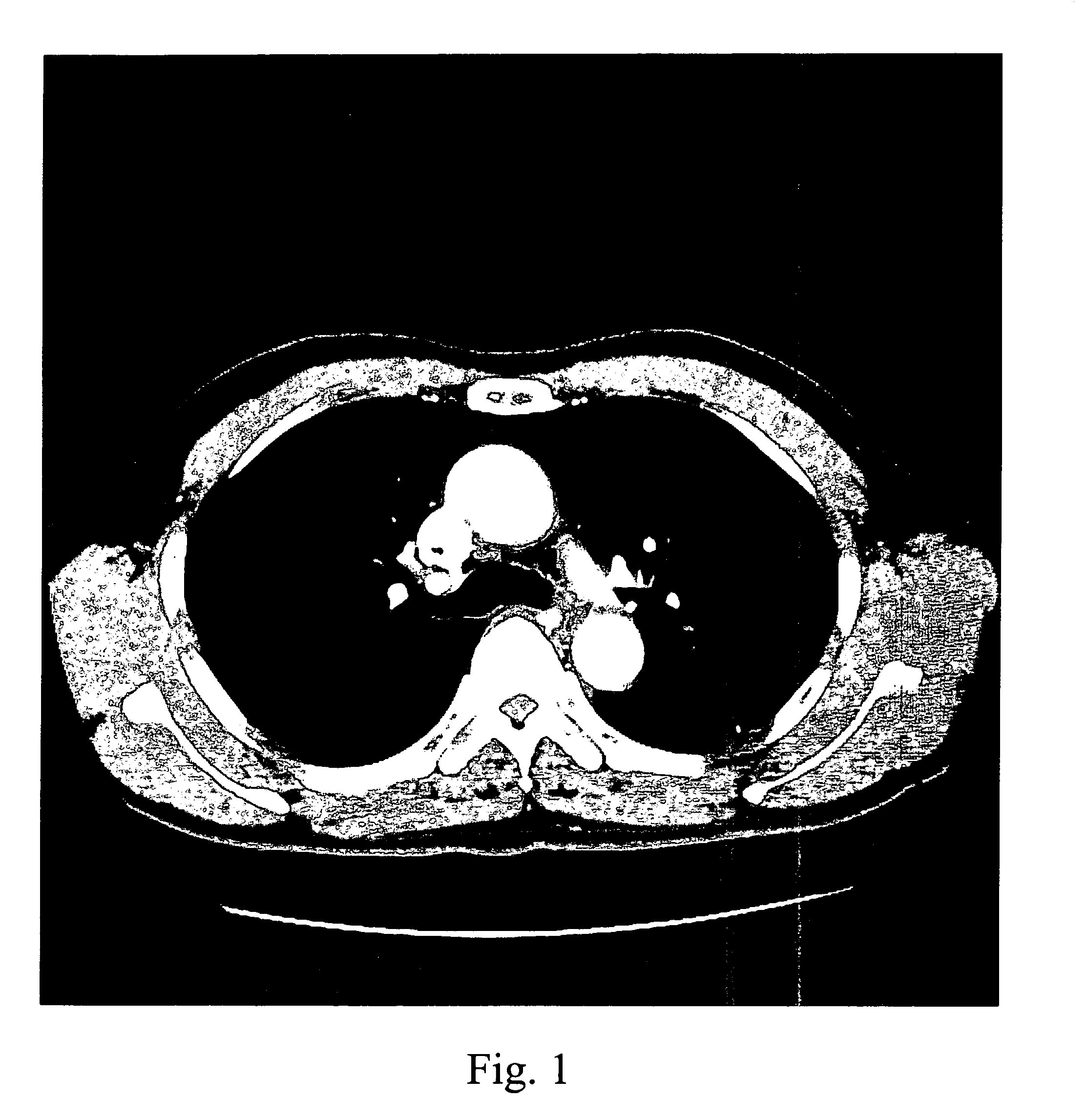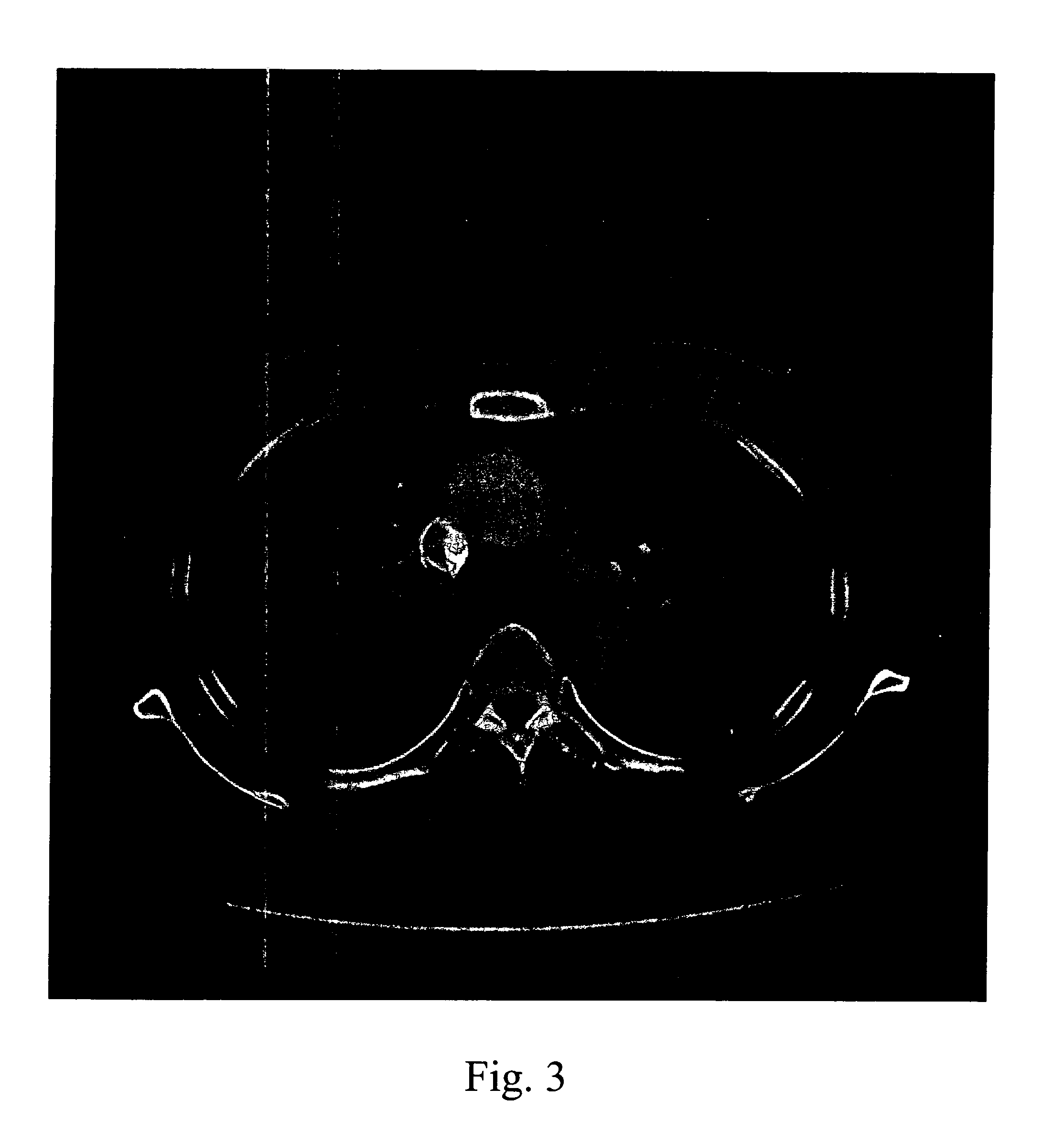Color spectral imaging
- Summary
- Abstract
- Description
- Claims
- Application Information
AI Technical Summary
Benefits of technology
Problems solved by technology
Method used
Image
Examples
Embodiment Construction
[0017]FIG. 4 shows a computed tomography image that has been colorized by the inventive method. The displayed anatomical region is the same as that of FIGS. 1–3, but all the internal organs and tissues are displayed together and readily discernible through the use of colors. The method of the present invention utilizes standard two-dimensional CT scan data in DICOM (Digital Image and Communications in Medicine) format, and requires no other pre-processing. The two-dimensional DICOM scan data contains relative radiologic density values of anatomical region of interest. The present invention employs a method of mapping a color spectrum comprising plurality of color bands onto a two-dimensional CT scan data, such that a predetermined sub-range of density value is represented with a unique color band of the color spectrum.
[0018]FIG. 4 illustrates an exemplary embodiment of the color spectrum 1 displayed on the right side of the computed image. The color band on the bottom of the spectrum 2
PUM
 Login to view more
Login to view more Abstract
Description
Claims
Application Information
 Login to view more
Login to view more - R&D Engineer
- R&D Manager
- IP Professional
- Industry Leading Data Capabilities
- Powerful AI technology
- Patent DNA Extraction
Browse by: Latest US Patents, China's latest patents, Technical Efficacy Thesaurus, Application Domain, Technology Topic.
© 2024 PatSnap. All rights reserved.Legal|Privacy policy|Modern Slavery Act Transparency Statement|Sitemap



